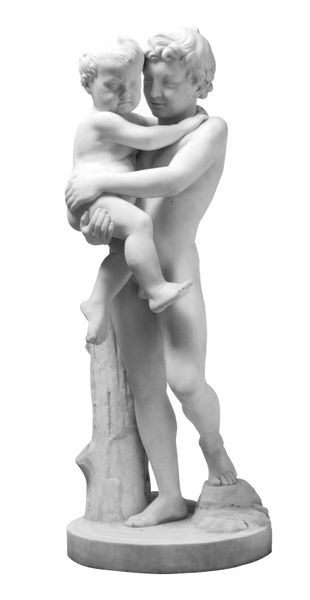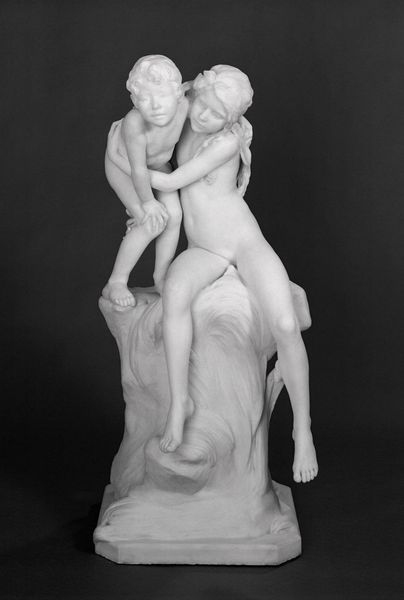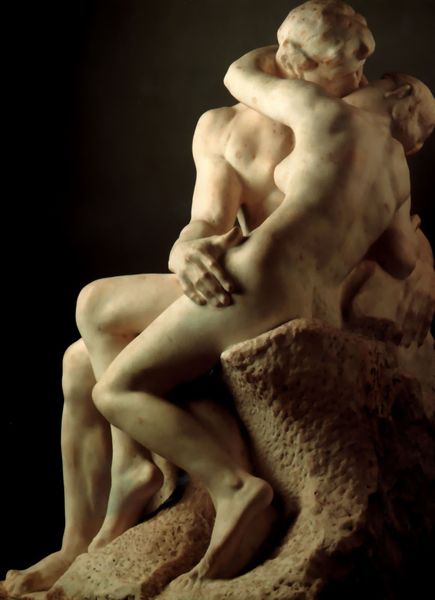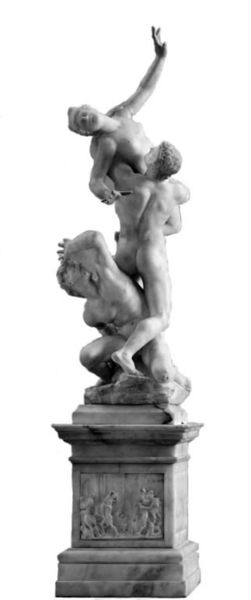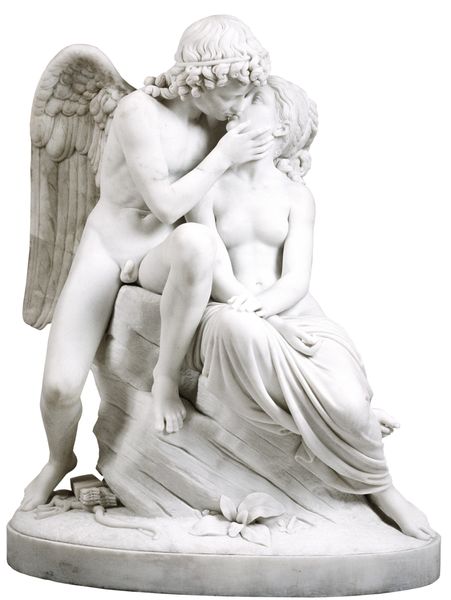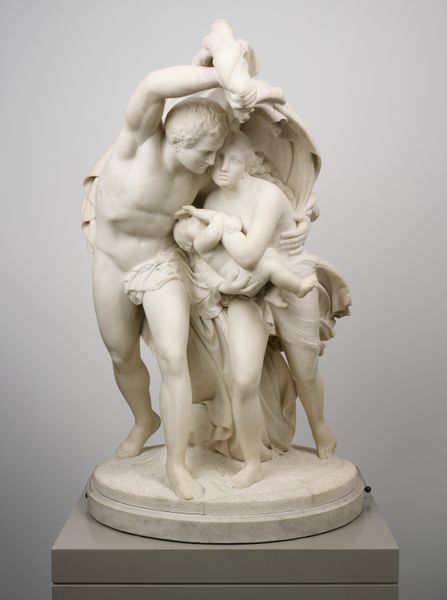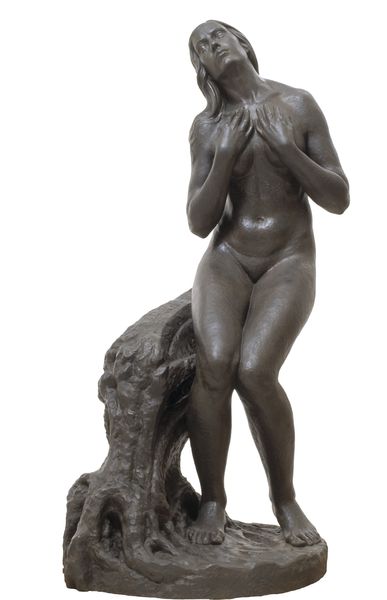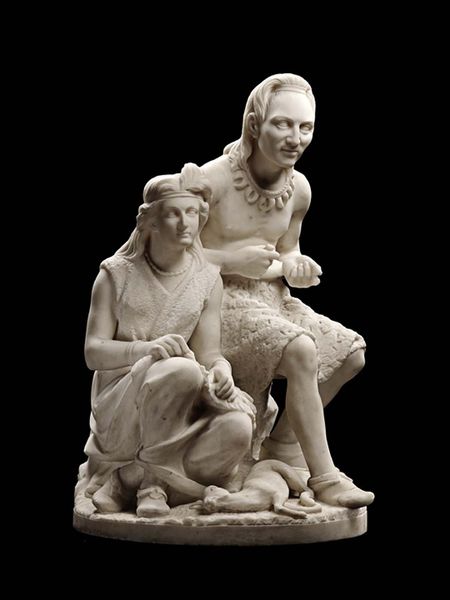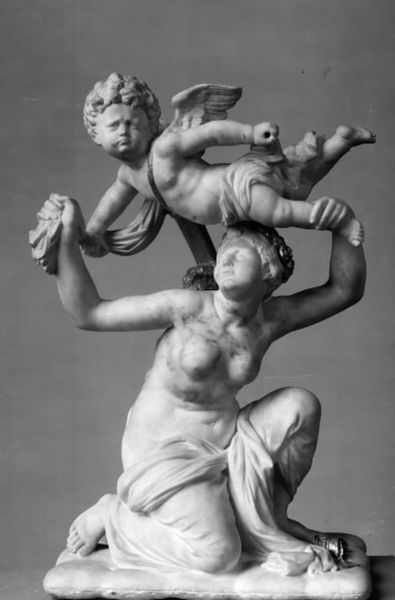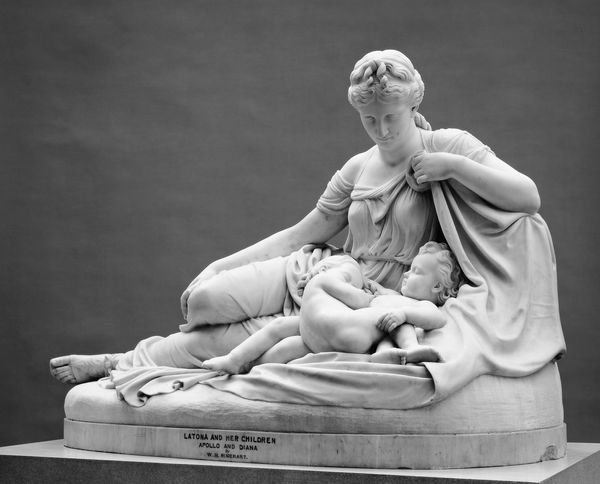
Dimensions: 105.2 cm (height) x 95 cm (width) x 65 cm (depth) (Netto)
Curator: Here we have "Bathing Girls," a marble sculpture by J.A. Jerichau, created in 1862. It's a prime example of neoclassical sculpture currently residing here at the SMK, Statens Museum for Kunst. Editor: My first impression? This work is a beautiful ode to human connection rendered with breathtaking delicacy. The stark white marble gives it this otherworldly, almost ethereal feel. What draws you in initially? Curator: For me, it's the tension inherent in the neo-classical ideal. The desire to hearken back to the purity of ancient Greece but created within a nineteenth-century societal context. We see it in the subtly sensuous portrayal of the nude form, grappling with notions of public morality. Editor: Yes, that balance is everything. The embrace feels protective but is charged with potential subversion, doesn’t it? It feels intensely human. The sculptor masterfully conveys a kind of silent dialogue. The way one figure gazes upward is compelling – almost searching for something beyond the confines of their marble existence. I wonder what those marble minds are contemplating... Curator: Indeed. These portrayals are always viewed and interpreted differently based on a given era’s accepted societal constraints. At the time it was presented to the public, it’s my understanding this was one in a wave of sculpture that caused quite a commotion as the nude, especially women, returned to popular appeal in high art. It wasn’t long before paintings depicting similar themes were filling exhibition halls, too! Editor: That ripple effect is fascinating! The choice of marble, echoing the art of antiquity, imbues the scene with timelessness. Yet, I suspect this was pushing the boundaries for the era. Now, gazing at the faces, I feel that this sculpture captures an experience of vulnerability. I'm wondering about that raw, immediate presence within this hard medium, though. Curator: Absolutely. And if you consider how sculpture—especially of this scale—becomes enmeshed within larger political and social forces. Art museums as institutions helped legitimize these, as well as dictate what we regard as "art." A large portion of Jerichau’s fame, though merited, hinged upon which venues carried his works. That greatly changed the degree to which people from various echelons of society might be able to observe these forms. Editor: True. What this shows us, then, is that art has a life outside the artist and, to a certain extent, outside the art itself! A good piece invites unending speculation. As it turns out, “Bathing Girls” by J.A. Jerichau does that brilliantly. Curator: Couldn’t agree more! Next we can check out another…
Comments
No comments
Be the first to comment and join the conversation on the ultimate creative platform.
